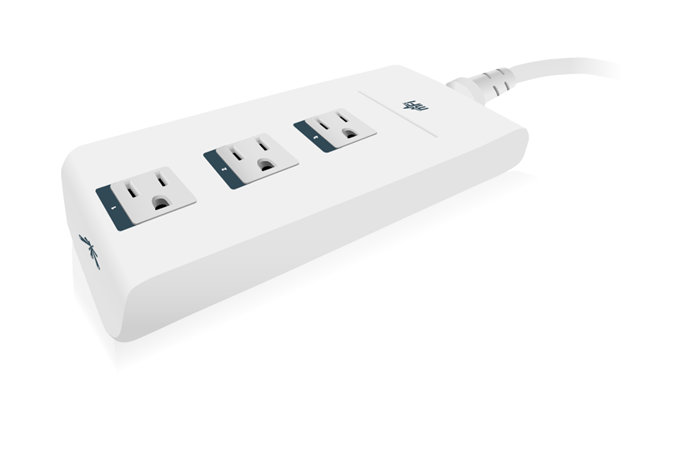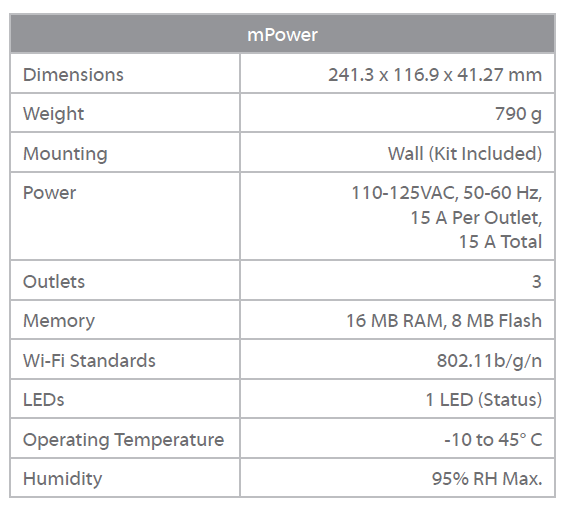Ubiquiti Networks mFi mPower Wi-Fi Power Strip Review
by Ganesh T S on November 21, 2013 3:00 AM EST- Posted in
- Home Automation
- Wi-Fi
- Ubiquiti Networks
- IoT

Introduction
The Internet of Things (IoT) revolution is happening right now. As smartphones proliferate, consumers want the ability to control devices in an automated and easy manner. Remotely switching a power outlet is one of the basic building blocks of an automation system (home or business building). Last year, we reviewed Visible Energy's UFO Power Center, a standalone device which combined energy awareness and home automation in a striking package. Today, we are looking at Ubiquiti's mPower mFi power strip. This is a device with similar features (ability to turn on/off an outlet over a wireless network and measure the power consumed by a device connected to an outlet). However, it caters to a very different market segment.
Ubiquiti Networks - Background
Ubiquiti Networks started off as a manufacturer of wireless products for enterprises, aiming mainly at emerging markets. We have generally found that their kits cost much lower than the competition (and it is attributed mainly to the fact that they don't employ a dedicated sales / marketing team). A couple of years ago, Ubiquiti started looking into expanding their product portfolio. One of the under-served product categories amongst businesses (Ubiquiti's target customers) is that of building automation. As home automation picks up steam, building automation (a term that I will use to talk about home automation technologies from the perspective of an office building) can be expected to follow. Ubiquiti launched the mFi product category to catch this wave. Ubiquiti calls the mFi as the reinvention of machine-to-machine (M2M) communication.
mFi - A Platform for Building Automation
The mFi product category consists of three main products, the mPort, mPort Serial and mPower. A number of sensors (under the mSensor category) are also included, and these interface with the mPort units through a Cat 5 cable. These include door sensors, motion detectors (both wall and ceiling varieties), temperature and current sensors. The mPort Serial provides a remote serial connection for any other devices controllable through a serial interface. Control of multiple such devices is integrated in a management software called mFi. Written in Java, it is compatible with multiple platforms.
Introducing the mPower
The product we are going to cover in detail today is the mPower. It comes in three variants, all of which support connection to a Wi-Fi network. The fundamental difference is in the number of switchable outlets. The mPower Mini has one, the mPower has three and the mPower Pro has eight. The mPower Pro also has a wired network port. Simply put, the mPower units allow the outlets to be turned on / off over the network using the mFi management software as well as a web interface. Essential statistics about each outlet (VRMS, IRMS, power factor and active power) are also reported through both avenues.
The mPower retails for around $60. The mFi controller software is bundled free with the unit. The mPower Pro (8-outlet version) retails for around $100, which represents better value per outlet. However, the Pro units were not easy to source since Ubiquiti had some supply constraints. Ubiquiti's products are not present in the usual retail channels. Instead, they are sold by B2B vendors (who sometimes have a presence on Amazon). The specifications of the mPower, as provided by Ubiquiti, are presented in the table below.

In the remainder of this piece, we will look at the setup and usage impressions, followed by details of the mPower platform. We will also present one of our custom applications developed for the mPower, thanks to its open platform. This will be followed by a few concluding remarks summarizing the pros and cons of the unit.










61 Comments
View All Comments
Hrel - Thursday, November 21, 2013 - link
Does the review even really matter? If you buy Mac products you're going to buy Mac products. IT's always the same thing and there's never any choice. Review isn't really necessary.melgross - Friday, November 22, 2013 - link
Very funny. It's sad though, if you keep buying Windows products after you buy the first one.DanNeely - Thursday, November 21, 2013 - link
Ganesh hasn't done any Apple reviews in at least at year; his review of this product has nothing to do with Anand finding time to write a review about the MBP.ydeer - Thursday, November 21, 2013 - link
With the dive in quality that the reviews on this site have taken lately, that doesn’t bother me nearly as much as it used to.I _bet_ the MBP review won't address the well documented and quite severe "yellow tint" screen issue because it won’t be there on their cherry picked review sample and "testing" the Xbox One is evidently more important than biting the hands that feed this site.
Flunk - Thursday, November 21, 2013 - link
I'll give you the gist of that review. It looks like last year's MacBook Pro, has Haswell and has better battery life, a PCIe SSD. A bit better GPU performance, almost the same CPU performance.Seriously, there are a lot of reviews out there.
stadisticado - Thursday, November 21, 2013 - link
You realize that more than one person works at Anandtech right? Its not like Anand or Brian personally reviewed this item...jason32 - Friday, November 22, 2013 - link
You're going to buy it anyway. Why bother reading reviews?edwpang - Thursday, November 21, 2013 - link
Why do I need these kind of device? . Apparently, we cannot use it to control computers. My TV and home theater receiver are just in standby which use less than 5W in total. We do need to control the lights but we need wifi-enable switch for that. What else do we need it for?alinot - Thursday, November 21, 2013 - link
I'd actually like to use it with my fish tank. There's a lot of parameters to control that run on electricity, including light, bubblers, filters, and heat that can effect the water. This matters a lot in smaller tanks especially, if one parameter goes out of whack unsupervised, your whole tank could die in a few hours. The fact that this is open source and hackable and controllable means I could implement it in my probes and measurements to automatically adjust as needed.This strikes me as a product that has more practical application in the enterprise and business environments than at home, though.
jason32 - Friday, November 22, 2013 - link
Why not use an Arduino and some peripherals if you're going to write your own code? Most of the use cases I see that require using your own custom code with these mFi products can be done with simple microcontroller boards and accessories.